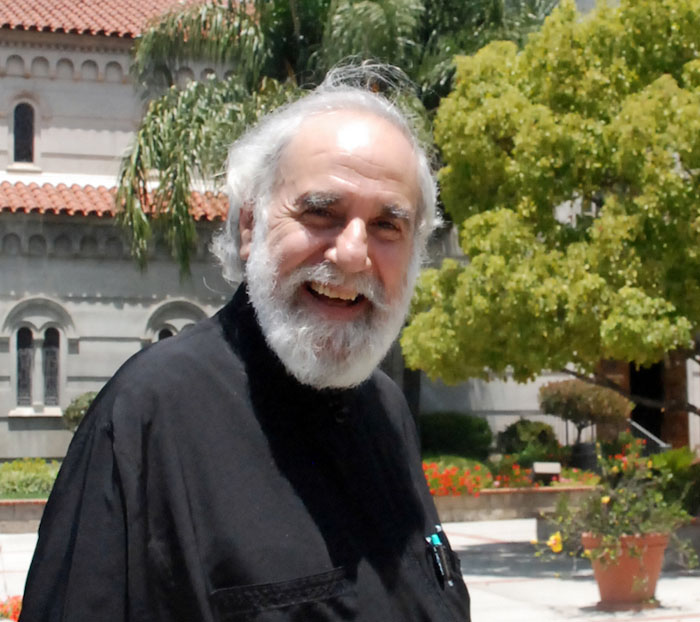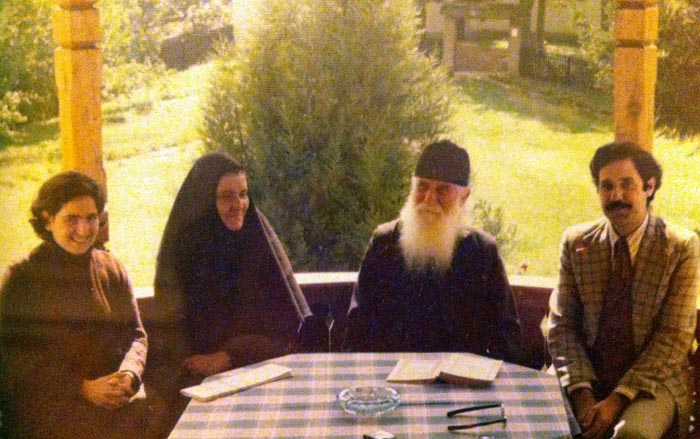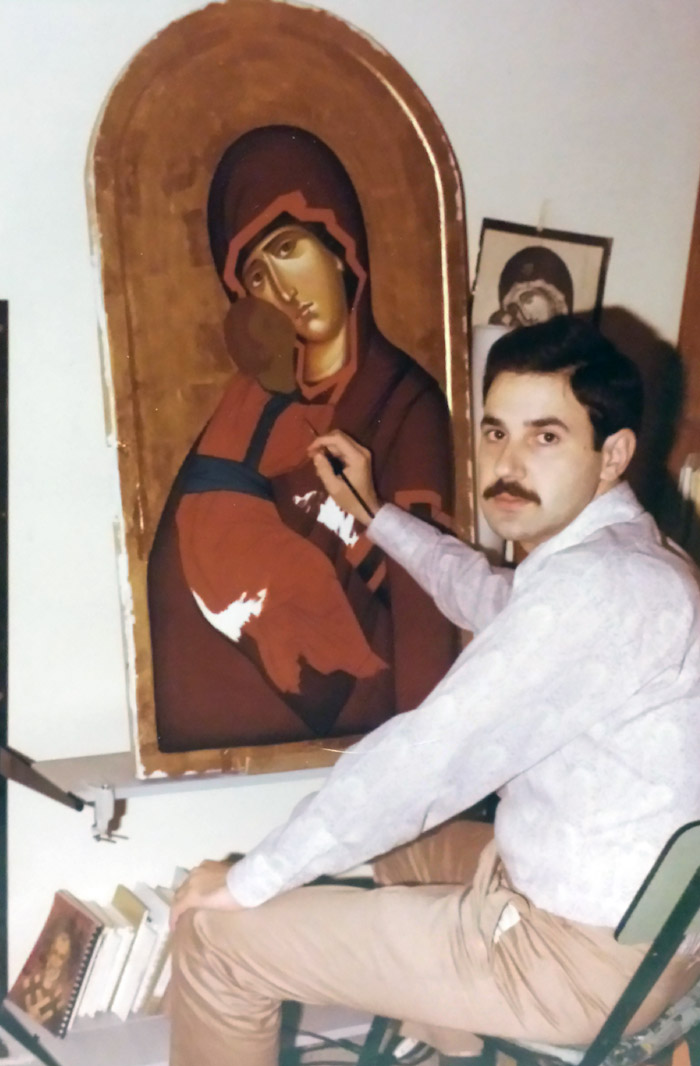
- Details
- Hits: 15868

Father Stamatis Skliris was born in Piraeus, the port of Athens, in 1946. At his baptism he was named after Holy New Martyr Stamatios from the island of Hydras. From the early childhood, he showed the artistic gifts and through his elementary and high school education, he began to paint and write church poems. Initially he completed the Medical faculty (1971), and then Theology (1976) at the University of Athens. He continues his studies in Belgrade at the Theological and Philosophical Faculty, attending lectures in Theology and Art History. His love and zeal for Theology and Art, defined him as one of the most knowledgeable Orthodox iconologos, iconographer and technotrope (designer and stylist) of icons, as well as of the ancient, medieval and modern art.
Along with his wife Marina he spent two years in Serbia, mostly in the Monastery of Cheliye, in the immediate vicinity of Fr. Justin (Popovic) – today St. Justin of Cheliye. During that period he decorated the monastery chapel devoted to St. Stefan the Decansky. He was initiated into the priesthood and since 1979. he has been serving in Athens.


He is the author of numerous studies, articles and books on art, icon-painting and theology. His works have been translated into several languages, including Serbian (Art space in the Byzantine icon painting, In the mirror and in the riddle). He took part in numerous group and individual exhibition "Zigos" 1991, 1994, 2004. in Athens and , Salon d' Autone 1992, 1993, Salon des Artistes Francais 1993 in Paris, Brussels 2004. and Titanium in Athens in 2007. He had his works exibited in Serbia on several ocassions: The Dormitory of Princess Ljubica, the Progress Gallery and others.
If we could try to express in short the chief characteristic of Father Stamatis Skliris as iconographer, then we would use the words of Abba Justin of blessed memory (to whom Fr. Stamatis painted recently a beautiful icon-portrait): “brother Stamatis has long ago taken place on iconostas of Christ-like iconography and Christ-centered iconology of Orthodoxy”. All his artistic, iconographic talent and activity of sacred art, of Incarnated God, man, God-created creation, Father Stamatis has based and developed on the Mystery of Christ – Son of God, Who is the Icon of Invisible God (Col. 1,15), Who became Son of Man through Incarnation, and thus appeared visible, describable, featured with colors and most particularly with the light – on a matter: paper, canvas, wood, wall, stone, metal.
Christ’s Incarnation is the foundation and the key of Father Stamatis’ Orthodox iconography and paintings.



